Search for mutations from cells, tissues (frozen or embedded in paraffin) or directly from genomic DNA:
The
Idylla technique (Biocartis) is utilized in our laboratory for several genes. It is a revolutionary approach that combines both DNA extraction and real-time PCR for a given gene. A whole range of genes have been commercialized by the company Biocartis and can be used in our laboratory.
PGM (Thermofisher) is used to look for somatic mutations in a broader spectrum by targeting 50 genes in cancer patients. This solution requires the users to conduct a bioinformatic interpretation of the data acquired during the sequencing.
The
Genereader platform (QIAgen) includes various instruments, covering all stages, from DNA extraction to data analysis and interpretation, which can be edited as a report. This platform is used within the laboratory for cancer patients. The application targets somatic mutations on a panel of 12 genes (KRAS, NRAS, KIT, BRAF, PDGFRA, ALK, EGFR, ERBB2, PIK3CA, ERBB3, ESR1, RAF1). Other applications may be possible.
Pyrosequencing (Qiagen Technology) is used in our laboratory for targeted mutation research (EGFr, KRAS, BRAF, NRAS and any other mutation marketed by Qiagen;
https://www.qiagen.com/fr/shop/detection-solutions/personalized-healthcare/). This is a fast technique that can sequence codons of interest from different genes. DNA extractions are performed with a kit (QIAamp DNA FFPE tissue for paraffin embedded tissue and MagNA Pure Compact Nucleic Acid Insulation for frozen tissues or for cells). The DNA is first amplified over the region of interest and then a pyrosequencing step targets the desired codons. Pyrograms are then obtained and analyzed by engineers of our laboratory, and authorized and validated by our molecular pathologists.
Sequencing by the Sanger method is performed in the laboratory with the
3500 Sequencer (Applied Biosystems). This technique makes it possible to sequence relatively long fragments. Once the DNA is extracted, it is amplified using specific primers that flank the desired area and the resulting PCR products are directly analyzed by the sequencer. The sequences thus obtained are examined by engineers from our laboratory and validated by our molecular pathologists.
